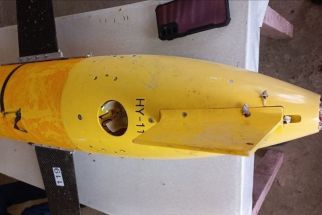What is oplan? Chaos marks House probe
MANILA, Philippines - One lawmaker asked what an “oplan” meant and involved. Some butted in as their colleagues spoke in the course of the House hearing on the Mamasapano carnage that drifted from one issue to another.
There were a lot of raised voices, there was weeping, and every lawmaker seemed to want to make sure he or she would be able to say something.
It was Cebu Rep. Gwen Garcia who wanted to know more about an oplan or operations plan, and how military or police units carry it out.
Antipolo Rep. Romeo Acop, a retired police general, followed up the question by asking each of the resource persons from the Armed Forces of the Philippines (AFP) and Philippine National Police (PNP) what their concept and understanding of an oplan were.
The hearing committees – public order and security, and peace and reconciliation – elicited few new answers from their resource persons in the hearing that was for the most part chaotic and without focus.
Committee members initially wrangled on how to start their inquiry. The hearing ended with two congresswomen tangling with the presiding chairmen on why they had to adjourn it.
As soon as the presiding chairmen opened the hearing, members quarreled on how to proceed, with some suggesting that the AFP, the PNP and other agencies or resource persons be allowed to make their respective presentations or remarks before being questioned.
If this were done, the presentations would take all day and members would not be able to ask questions, some members complained.
After a 30-minute debate, the hearing committees initially allowed the presentations of the PNP, AFP and of sacked PNP Special Action Force (SAF) chief Director Getulio Napeñas, in that order.
For more than two hours, the military, PNP and Napeñas repeated before congressmen and the nation what they told the Senate inquiry on Monday and Tuesday.
When it was the sacked SAF chief’s turn, as he did in the Senate, he started by tracing the history of his career in the police organization, prompting Negros Occidental Rep. Jeffrey Ferrer, chair of the public order and safety committee, to ask him to proceed directly to the Mamasapano carnage.
The possible repetition of testimonies was one of the reasons why Speaker Feliciano Belmonte Jr. proposed a joint Senate-House inquiry days before senators opened their probe on Monday.
However, the Senate rejected Belmonte’s proposal.
Noting the replay of presentations yesterday, Muntinlupa Rep. Rodolfo Biazon informed his colleagues that he has filed a resolution supporting Belmonte’s suggestion and calling on the Senate to agree to a joint inquiry.
Biazon, a former AFP chief, said his worry is that the need for military commanders in Mindanao to attend the separate Senate and House investigators would take them away from security duties in their assigned areas.
Toward the later part of yesterday’s hearing, on questioning by Rep. Antonio Tinio of party-list Alliance of Concerned Teachers, Lt. Gen. Rustico Guerrero admitted that President Aquino, at nearly 7 p.m. on Jan. 25, more than 12 hours after SAF teams clashed with Muslim rebels, authorized a “best effort” rescue “without endangering reinforcing troops.”
This information did not surface in the Senate probe, nor did Aquino mention it in his two televised addresses on the Mamasapano bloodbath.
Members of the hearing committees also wrangled on whether to show video footage of a wounded man in uniform who is seen writhing but is finished off with two close-range shots from a pistol.
- Latest
- Trending






























